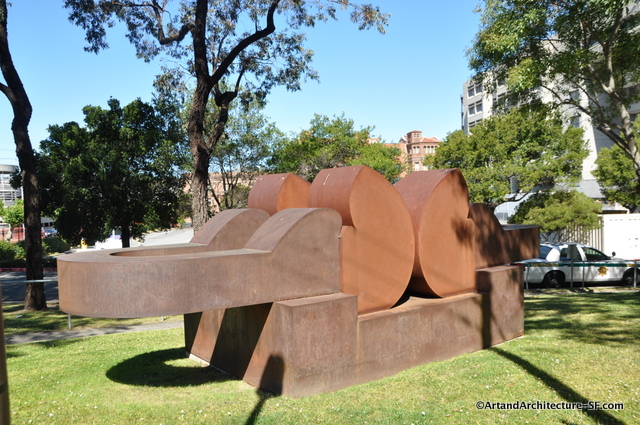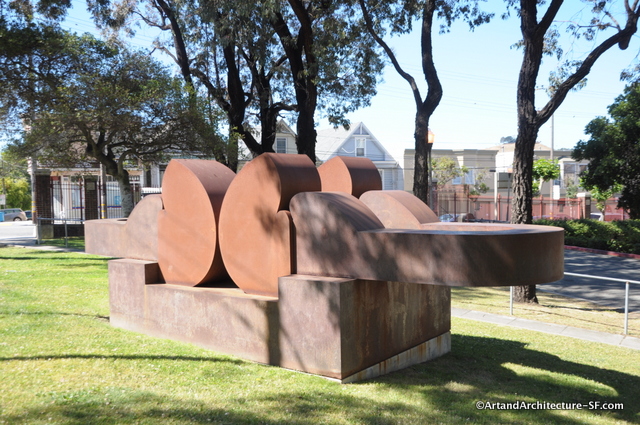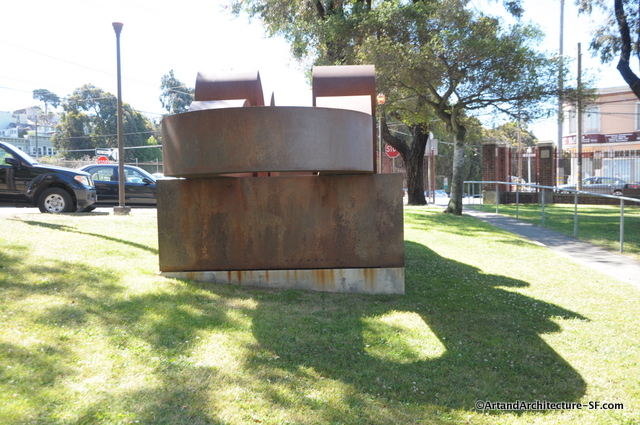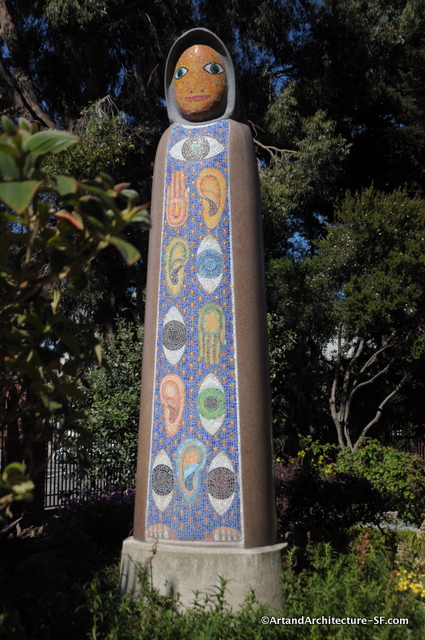In 2009 Stiff Loops was moved from its original site and underwent a $44,650 renovation. It was then placed at the corner of the hospital parking lot to make way for the construction of the new Trauma Center. The conservation treatments were meant to mitigate corrosion and enhance structural stability.
Gerald Walburg (1936- ) is a retired art teacher from California State University Sacramento.
From a March 3, 2004 CSUS newspaper:
Like many artists, Walburg started drawing at a very young age. He majored in art as an undergraduate at San Francisco State University. Walburg continued his studies in art as a graduate student at UC Davis.
“It was there (at Davis) that I started working large,” Walburg said. By “large” he refers to the towering 40-foot metal sculpture that stands in front of the Macy’s in the downtown mall called the Indo Arch.
As a member of the Art Department faculty, Walburg has taught graduate, lower and upper division students. He encourages his students to work hard and to come to his class without a “preconceived idea of what sculpture should be.” He urges students to “(find) your own vision to express who you are.”
His aim as an artist is to challenge both himself and his viewers. An artist who is hardly satisfied with his work, Walburg is constantly reinventing himself.
“It would be easier to stay at the same pace over and over again,” he said. He believes that people should “develop as an artist over time” rather than think about what particular style they want to display.
“It usually takes people 10 years to understand what I’m doing as an artist. By that time I’ve already moved on,” he said.
If Walburg does not succeed in challenging you through his art, there is still a chance his politics will. Like many other faculty members at Sac State, Walburg has seen many changes since 1969, when he joined the faculty.
“The level of support for the Art Department has diminished greatly,” laments Walburg. For example, in 1969 the operating expense for his sculpting class was $1,000. Today, 35 years later, he receives $600 in operating expenses to accomplish the same level of teaching. The lack of money, he said, makes it “more and more difficult to do the job.”
Within the past 20 years Walburg has seen student fees rise higher and higher. He points out that it was not always like this.
“Education was once what made California great — it is now what breaks us,” Walburg said.
When he started working, administrators came from the faculty. “They had a real connection to the education,” he explains. The administration now seems to be looking at education from more of a business standpoint. The lack of evaluation in the administration offices leaves him to conclude that the best interest of the students is no longer what is being sought.
“Money should be put back into education,” Walburg said



